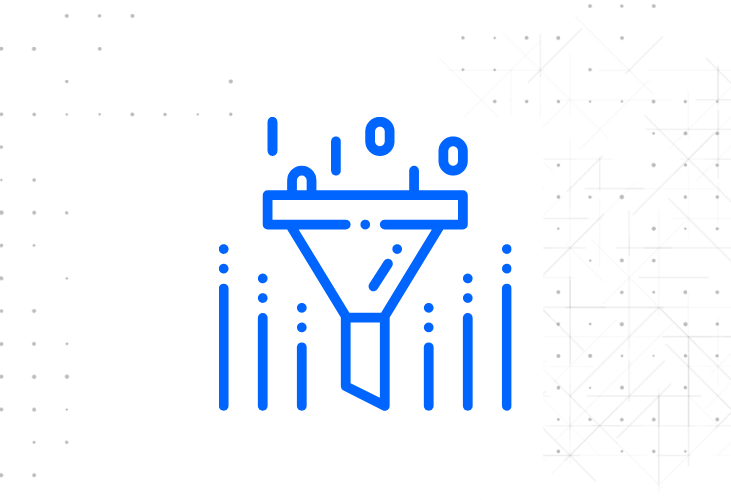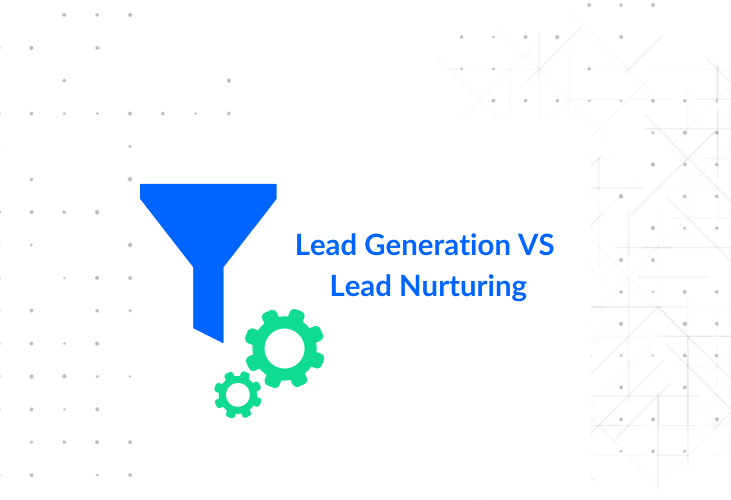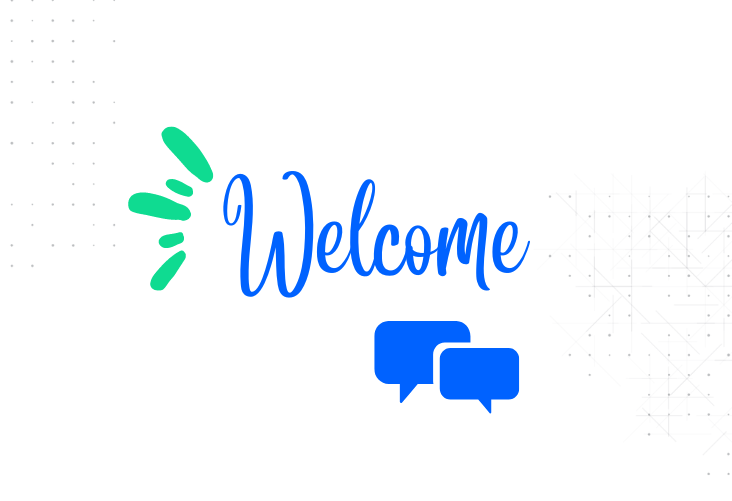What is Lead Nurturing? Overview and Strategies (with Examples)

Table of Contents
- What Is Lead Nurturing?
- Lead Nurturing Strategy and Workflow
- Lead Nurturing Statistics To Inform Your Strategy (Infographics)
- Lead Generation vs. Lead Nurturing
- Lead Nurturing Best Practices
- Push Notifications
- Email Marketing
- Microsites
- Effective Lead Nurturing Examples
- Welcome Messages
- Re-engaging Messages
- Promotional Nurturing Campaigns
- Conclusion
Show more
Businesses are all about relationships, and it’s especially true in the digital age when communication with customers is no longer one-way. Establishing itself as a company that cares about its customers and is ready to invest resources to ensure they receive the best possible service can give businesses a leg up in a competition. And as the effectiveness of digital ads declines, and people want to be helped instead of sold to, it becomes critical for business growth.
This process of building relationships with customers at every stage of the sales funnel is known as lead nurturing. It allows companies to increase sales and conversions over time, by interacting with their leads in meaningful ways. In this article, you’ll learn about what exactly lead nurturing is, how to create a working strategy, which channels to use, and more.
What Is Lead Nurturing?
Lead nurturing focuses on the marketing and communication efforts of the company, as well as its ability to listen to customers and understand what they want. The aim of this is to build brand awareness and establish trusting, friendly, and lasting relationships with the customer until they are ready to buy, and after it. According to research by Gleanster Research, 50% of new leads, when they enter the sales funnel, are not ready to buy yet. That’s why it’s critical to build relationships with customers through well-thought-out lead nurturing strategies, slowly guiding them to make a purchase. These strategies are especially important in the case of longer sales funnels, as there is a higher chance of leads leaving.
Lead Nurturing Strategy and Workflow
Lead nurturing is not a sprint, it’s a marathon. It takes time and effort, and it also requires a well-defined strategy and workflow in place to be successful. They will help guide your actions, and stay on track, without digressing from your lead nurturing goals.
When creating a lead nurturing strategy, there are a few things that you need to keep in mind. The most important of them are three key elements of creating a lead nurturing strategy:
Contact management – Storing contact information and the data you have up to date on your subscriber.
Segmentation – Customers have different preferences, so it’s unlikely that the same campaign will resonate with them. This is where segmentation comes to play. Make sure to use the data you have on your subscribers to offer them a relevant and valuable experience they will find useful.
The buyer’s journey – As your customers have different preferences, the same way they are at different stages of the sales funnel. When creating your strategy, consider how far the users are in the buyer’s journey to maximize the impact of your campaigns.
After you have your strategy in place, it’s time to plan how you are going to deliver your campaigns. For example, you can send discount messages to people who have abandoned carts or left the checkout. This process is known as lead nurturing workflow. Here are a few steps you can take to create an effective lead nurturing workflow.
1. Establish the goals of your campaign.
2. Understand who your target audience is.
3. Outline the content for each stage of users’ journey.
4. Set up the workflow of marketing automation tools you use.
5. Review the results and optimize your next campaigns based on that.
As time goes by, you’ll learn from the experience and see what works better for your visitors. As this happens, don’t be reluctant to alter your steps accordingly.
Lead Nurturing Statistics To Inform Your Strategy (Infographics)
Lead nurturing is all about guiding users through your sales funnel with relevant and valuable information from your brand. As the following statistics show, proper lead nurturing can be one of the decisive factors for the success of your marketing campaign. Keep them in mind when designing your marketing strategy, to make sure it yields good results.
- Lead nurturing emails get 4-10 more responses than other email types.
- 80% of marketers using automation software report generating more leads.
- Only 29% of brands nurture their existing customers after the first purchase.
- Targeting users with relevant content along their sales funnel yields 73% higher conversion rates.
- 52% of marketers plan their lead nurturing strategies for next year.
- 48% of businesses say most of their leads require a “long cycle” nurturing.
- A typical customer journey consists of around 5-20 touchpoints.
Lead Generation vs. Lead Nurturing

Another term quite often used when discussing marketing and business growth is “lead generation.” Although many use the terms “lead nurturing” and “lead generation” interchangeably, the two terms do not describe the same process. In order to help you avoid making the same mistake, let’s take a look at the definitions of each term and understand the differences.
Lead generation is the process of finding new people who may potentially be interested in your business. This can be done with methods including SEO, Pay-Per-Click ads, and more, through engaging and attracting customers. Simply put, lead generation is the process of attracting new customers.
Lead nurturing, as mentioned earlier, is the process of building relationships with the people who’re already interested in your brand. These are the people who’ve followed you on social platforms, subscribed to your newsletters, etc. You then use different channels to establish yourself as a trusted leader and show them that you care about them.
A good way to differentiate these two is to think of lead nurturing as the continuation of lead generation. Both are critical parts of every successful marketing strategy, but it’s important to understand the difference.
Lead Nurturing Best Practices
Now as you hopefully grasped the foundations of lead nurturing, let’s take a look at a few ways you can nurture the relationship with the people who’ve expressed interest in your brand.
Push Notifications
Push notifications are gaining popularity among marketers as a lead nurturing channel, and for a good reason: they are affordable, quick, and to the point. Because of being an opt-in marketing channel, you can use push notifications to connect with people who’ve already shown some interest in your brand. Within push notifications too, there are many different ways to nurture leads, depending on where in the sales funnel your subscribers are. You can also use the data you’ve gathered during your campaigns to segment your subscribers and send them personalized messages. As Sai Blackbyrn, CEO at Coach Foundation mentions, “Push notifications are extremely customizable, making them a viable strategy in a period where customization is key.”
Email Marketing
Yes, email marketing is still there, and it’s one of the best channels your business can use as part of its lead nurturing strategy. Like push notifications, email is an opt-in channel too, so here again, you have the benefit of reaching out only to the people who want to hear from you. You can start with “Welcome” emails, and then customize your emails as you go. For people who’ve just joined your brand, you can craft informational content in the form of newsletters and eBooks, for example. On the other hand, if you have older subscribers or loyal customers, you can give them exclusive offers and discounts. There are many ways in which you can use email, and the right strategy will depend mainly on your business goals.
Microsites
Microsites are a digital channel that has started gaining popularity recently. While it’s hard to give an exact definition to microsites, chances are, you’ve even come across them if you’ve clicked a link in someone’s social media bio. Microsites are small, usually one-page websites not connected to the main website of the business, and their main aim is lead generation. They usually focus on a specific marketing goal (promoting a product launch or an event, for example,) and the entire content is centered around that. This focus allows to attract a narrow audience who’s already interested and makes it easier to direct them to take the desired action as there are no distractions.
Effective Lead Nurturing Examples
The goal of any good lead nurturing campaign is to engage the audience with the brand, boost their interest in it, and help build trusting relationships to ultimately close a sale. This is usually done in a few steps, gradually getting closer to the subscriber, one step after the other. Let’s take a look at a few lead nurturing examples to understand how this can be done.
-
Welcome Messages

A welcome message is just what it seems – a short welcome note greeting the person who just subscribed to your messaging. It is also the first impression the subscriber will get from communication with your brand, so it should be approached with utmost importance. Every time someone subscribes to your email newsletters, push notifications, or blog, a warm and concise welcome message should follow shortly. You can even include a small discount as a treat, but this is by no means mandatory.
-
Re-engaging Messages
As the name suggests, the main aim of these messages is to re-engage the customers that have become inactive. Not all leads you get will make it to the end of the funnel, but with the right re-engaging strategy, you can maximize the number of those who do. Re-engagement campaigns are designed to target those users in your subscription lists that have become inactive over time and bring them back.
-
Promotional Nurturing Campaigns
Everyone loves discounts. As your lead is approaching the final stage of the funnel, a well-timed promotional message offering them a discount, an additional feature, or a small gift has the power to drive the users to make the purchase. The offer, of course, should be based on their interest, so it’s important to make sure your message is properly targeted. It should also be designed with the aim to convert
Conclusion
Lead nurturing is an integral part of every marketing and business development strategy that no company can overlook. Investing in it can add meaning to your lead generation and overall promotional efforts, helping you to bring in better results. There are many channels and strategies that you can use to nurture leads. What you need is to understand your business needs, and direct your lead nurturing efforts accordingly.

